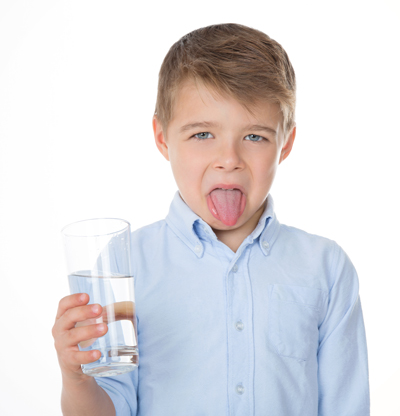Chlorine vs. Chloramines: What is the difference?
Ideally, you want your water to be clean, pure and tasteless. Yet, often times it can have disinfectants, like chloramines and chlorine that cause foul odors and leave undesirable tastes behind.
Since the majority of us receive our water from a public water supply, we understand that chlorine and chloramine is in our drinking water is there for a reason. For more than 100 years, chlorination has saved lives and played a critical role in defending America’s drinking water supply from pathogens that can cause waterborne diseases such as typhoid and cholera.
The Downside of Chlorination
Besides the fact that many of us don’t care for the strong ‘bleach-like’ odor of chlorinated drinking water, there are other compelling reasons to want to remove chlorine from our home’s drinking water.
While chlorine indeed protects against waterborne disease, in recent years, research has brought to light the fact that chlorine can react with natural organic matter (NOM) to form disinfection byproducts (DBPs) such as trihalmethanes (THMs) and haloacetic acids (HAAs).
What do those big words mean to you and me?
Unfortunately, these disinfection byproducts (DBPs) have been linked to increased cancer risk and liver, kidney or central nervous system damage.[i] In fact, trihalmethanes (THMs) in tap water is found to be responsible for nearly 17 percent of bladder cancers diagnosed each year in the US. As a result, the US EPA has now established safe maximum contamination levels in order to protect the public health from the potential dangers of chlorine.
The Switch from Chlorine to Chloramine
Due to concerns about the adverse effects of chlorination, many water utilities are increasingly making the switch from chlorine to chloramine as a secondary disinfectant. In 2010, 23 percent of the US population (68 million people) received water treated with chloramines—and that number continues to rise each year.
The reason for the switch is because chloramine disinfection is chemically more stable, longer lasting during distribution and more effective than chlorine.
But is Chloramine Safe?
In low dosages, chloramines are generally safe in drinking water.
“According to the US EPA, chloraminated water is safe to use for drinking, cooking, bathing and other household uses; however, health authorities recognize that people with compromised immune systems and skin problems should not drink chloraminated water.”[ii]
The US EPA has acknowledged chlormine as a disinfectant and recognized its capacity to control THM formation in water, but has yet to address its potential toxicity.
Chloramine disinfection has its disadvantages:
- Problems with lead release from metal corrosion.
- Potential skin problems and chemical sensitivities.
- Chloramine must be removed before using kidney dialysis machines.
- Like chlorine, chloramine disinfection also produces a strong taste and odor.
- Chloramine can be difficult to remove from water.
Solutions for Chlorine and Chloramine Removal
Since 86 percent of the US receives water from a public water supply, it’s almost guaranteed that our water contains chlorine and/or chloramine. If you’re interested in finding out the level of chlorine or chloramine in your water, a local water treatment professional can provide you with a water analysis to better understand exactly what’s in your water and the possible solutions.
WaterTech Has Helpful Soltuions
For Chlorine Removal: WaterTech’s Reionator, BlueMAX (with activated carbon block filter), Sorbmax with high activated carbon, and the RO PureMAX II are all systems that can remove chlorine. A water treatment professional can help you understand which system is the best fit for your water.
NEW! For Chloramine Removal: Because of chlormaines low molecular weight, it cannot be removed with a typical carbon filter or a water conditioner. Thus, it takes a different approach: WaterTech’s new SorbMAX Plus Chrloarmine Reduction System.
The SorbMAX PLUS was created specifically for CHLORAMINE reduction as well as addressing chlorine, dissolved organic contaminants (including synthetic organic chemicals), metallic tastes, foul odors and other troublesome contaminants that affect water quality. Manufactured with Centaur™ Carbon and other industry leading components, this system is designed for great performance and durability. Ask your local WaterTech dealer for details.
[i] http://www.wcponline.com/pdf/1110Li.pdf
[ii] http://www.filtrextechnologies.com/images/WCPChloramines.pdf



